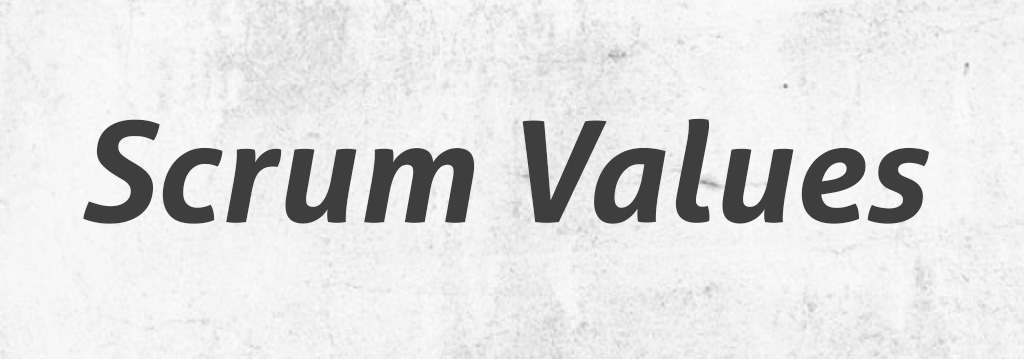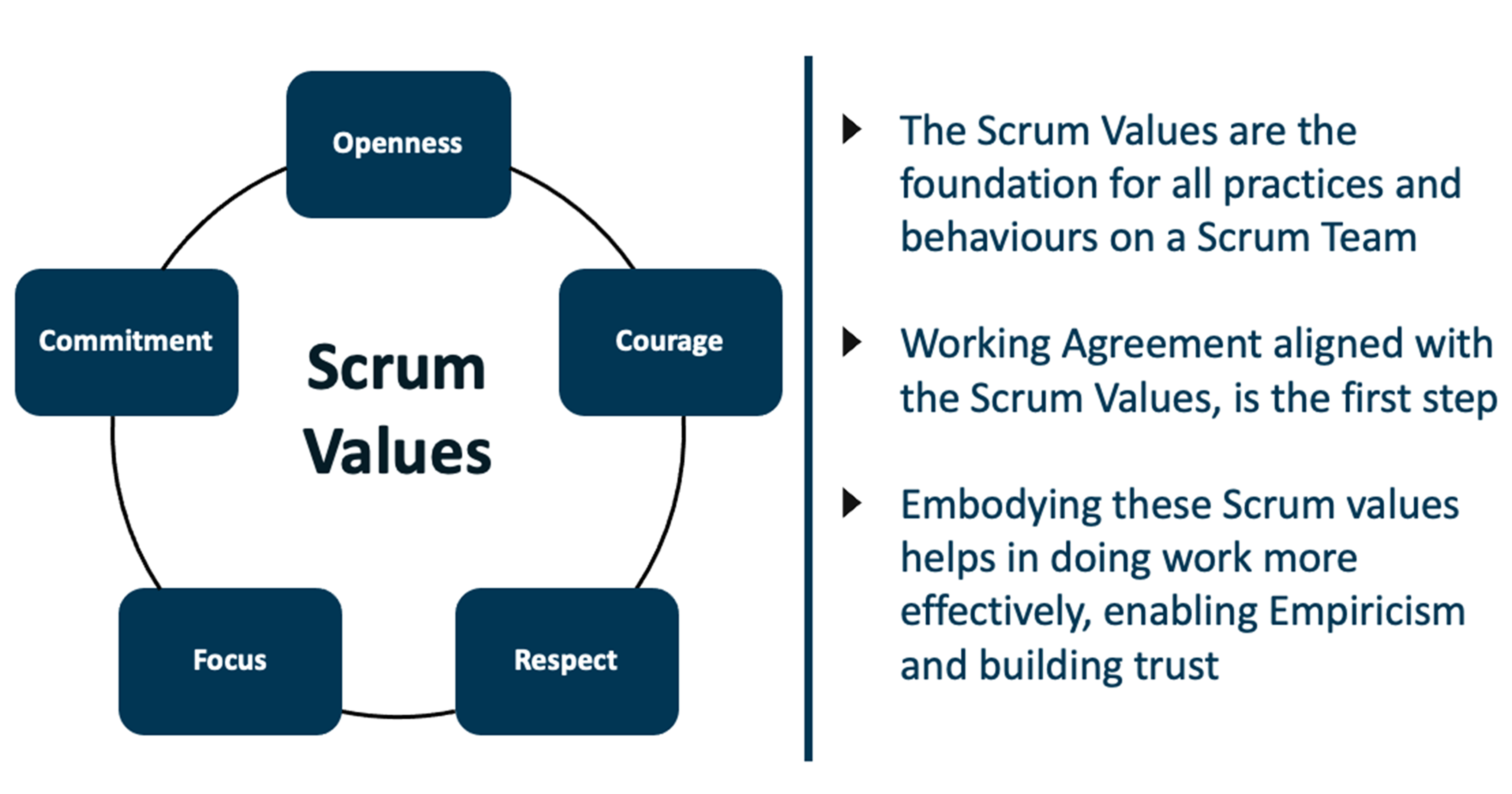
Category : ScrumScrum Values
By Vineet Patni | 5 February 2021
Scrum Framework provides a team-based approach to effective and fulfilling work. Within the boundaries of a Scrum, the team members learn through experience, self-organize while working on issues, and constantly evaluate their failures and gains for continuous improvement. In other words, Scrum is more about behavior than rules and procedures. And to uphold the behavior of the members of a Scrum Team, a set of values is essential.

The success of a Scrum depends on how proficient the members are in living the five Scrum Values. Let’s have a coup d’oeil on each of these values.
- Respect
Respect for people plays a crucial role in a team where individuals from diverse backgrounds work together to achieve specific goals. Respect means acknowledging each other’s experiences, skills, insights, personality, expertise, and knowledge. Helping each other in the team and sharing gains and losses also fall under respect. In other words, respect indicates equality. Apart from respecting each other in the group, members should also show respect by not wasting time on things that are not valuable or acceptable within the framework of Scrum. Further, accepting the changing mind of customers and the willingness to fix the issues that users face is considered as respect in Scrum.
- Courage
Courage indicates doing the right thing irrespective of whether others are accomplishing it. Courage also implies coming out of your comfort zone and taking up challenging problems; it doesn’t mean working on things nobody would like to have. And courage is the honesty to admit no one is perfect and letting go of the feint certainties of the past. It’s the readiness to share all possible information among the members and not to deliver incomplete tasks. Again, courage is the willingness to have difficult conversations, take decisions, change directions, and make progress.
- Openness
As Scrum relies on transparency, respect, and courage, the members should not worry about being judged or pulled down. They should be open about their work, views, learning, progress, and problems. Simultaneously, the members should be available to collaborate with people from various departments/teams who have different skill sets and are from various levels of the organizational hierarchy. Openness implies being open to changes, sharing feedback, and learning from others. In short, openness is speaking your heart.
- Commitment
In Scrum, commitment doesn’t indicate the result; instead, it shows the dedication of the members towards their task and how much effort they put into achieving it. Usually, teams work on complex problems under challenging circumstances. So, the result may come differently than expected or promised earlier. Hence, it’s unfair to judge the commitment of a team based on the outcome. Commitment is all about doing the task in the best way you can while ensuring quality.
- Focus
Focus refers to the capability of the team to stay concentrated on goals, thereby minimizing the waste of time. Here, time-boxing can aid the team members in focusing on what is most valuable now. Focusing on the present will enable them to enhance their skills and expertise and prepare them to face future challenges.
Those mentioned above are the core Scrum Values. A lag in these core values can impact the team’s reputation. For instance, a highly committed group that needs more openness can face low customer satisfaction and a lack of trust.
As a team, you should expand beyond these core values. Depending upon the necessity and situation, you can add more values in your Scrum that can bind the members together.
About The Author:
Vineet Patni is the Founder and Principal Agile Coach at ScaleUp. An avid learner and a passionate facilitator, Vineet has been assisting enterprises and individuals in becoming truly Agile. Please feel free to connect with him at Vineet@ScaleUpConsultants.com .
Disclaimer: The opinions expressed in this post are the author’s own. The author welcomes and respects any difference of opinion.


Leave a Reply